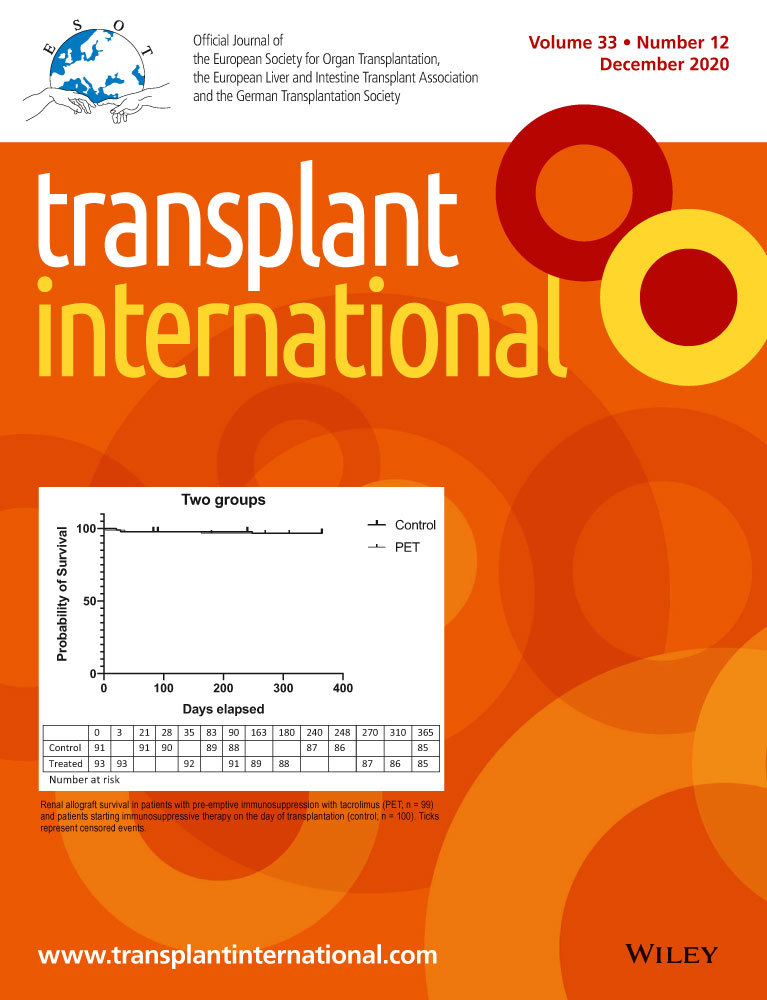Patient and center characteristics associated with kidney transplant outcomes: a binational registry analysis
Summary
This registry-based study evaluated the contribution of center characteristics to kidney transplant outcomes in adult first kidney transplant recipients in Australia and New Zealand between 2004 and 2014. Primary outcomes were mortality and graft failure, and secondary outcomes were transplant complications. Overall, 6970 transplants from 17 centers were included. For deceased donor transplants, 5-year patient and graft survival rates varied considerably (81.0–93.9% and 72.2–88.3%, respectively). Variations in mortality and graft failure were partially reduced after adjustment for patient characteristics (1% and 20% reductions) and more markedly reduced after adjustment for center characteristics (41% and 55% reductions). For living donor transplants, 5-year patient and graft survival rates varied (89.7–100% and 79.2–96.9%, respectively). Centers with high average total ischemic times (>14 h) were associated with higher mortality for both deceased (adjusted hazard ratio [(AHR] 2.24, 95% CI 1.21–4.13) and living donor transplants (AHR 1.76, 95% CI 1.02–3.04). Small center size (<35 new kidney transplants/year) was associated with a lower hazard of mortality for living donor kidney transplants (AHR 0.48, 95% CI 0.28–0.81). No center characteristic was associated with graft failure. The appreciable variations in deceased donor kidney transplant recipient and graft survival outcomes across centers were attributable to center effects.
Conflicts of interest
DWJ has received consultancy fees, research grants, speaker’s honoraria, and travel sponsorships from Baxter Healthcare and Fresenius Medical Care. He is supported by a National Health and Medical Research Council Practitioner Fellowship. YC is supported by a National Health and Medical Research Council Early Career Fellowship. She has received research grants and speaker’s honoraria from Baxter Healthcare and Fresenius Medical Care. The funders did not have any role in study design; collection, analysis, and interpretation of data; writing the report; and the decision to submit the report for publication. WL has received consultancy fees, research grants, and speaker’s honoraria for Astellas, Novartis, and Alexion. He is supported by a Raine (University of Western Australia and Department of Health, Western Australia) and Jacquot (Royal Australasian College of Physicians) Career Development Fellowships. MGC has received research grants from Baxter Healthcare and is supported by a Jacquot (Royal Australasian College of Physicians) Research Establishment Fellowship. RSF has received honoraria from Astellas, Amgen, and Novartis. NMI received honoraria from Alexion, Novo Nordisk, Amgen. CMH has received research grants from Baxter Healthcare and Fresenius Medical Care paid to her institution and clinical trial consultancy fees from Janssen, GlaxoSmithKline and Otsuka, paid to her institution. HH has received consultancy fees and travel sponsorships from AWAK Technologies Pte Ltd. She has also received speaker’s honoraria and travel sponsorships from Baxter Healthcare All other authors of this manuscript have no conflicts of interest to disclose.




